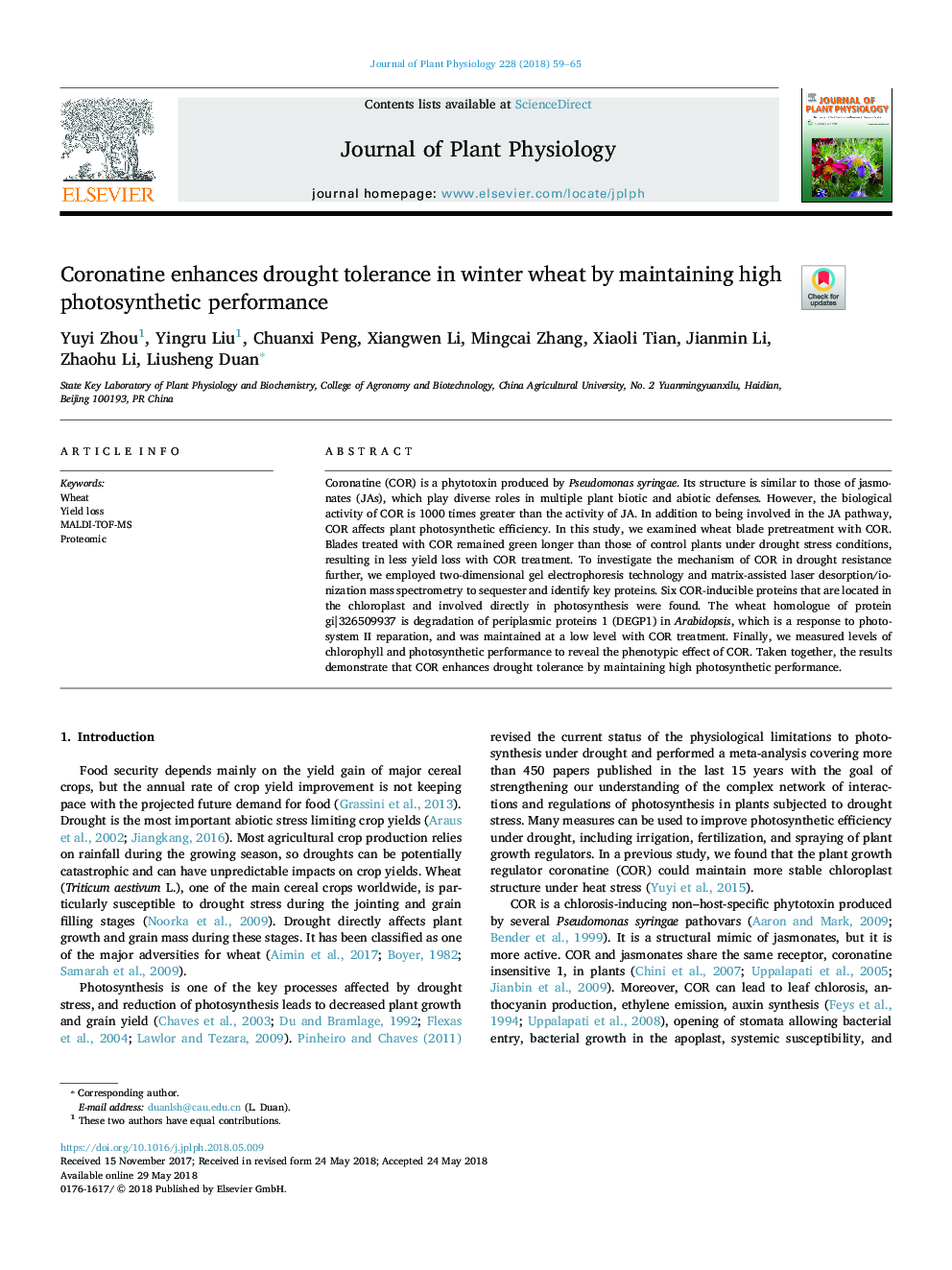| Article ID | Journal | Published Year | Pages | File Type |
|---|---|---|---|---|
| 8386696 | Journal of Plant Physiology | 2018 | 7 Pages |
Abstract
Coronatine (COR) is a phytotoxin produced by Pseudomonas syringae. Its structure is similar to those of jasmonates (JAs), which play diverse roles in multiple plant biotic and abiotic defenses. However, the biological activity of COR is 1000 times greater than the activity of JA. In addition to being involved in the JA pathway, COR affects plant photosynthetic efficiency. In this study, we examined wheat blade pretreatment with COR. Blades treated with COR remained green longer than those of control plants under drought stress conditions, resulting in less yield loss with COR treatment. To investigate the mechanism of COR in drought resistance further, we employed two-dimensional gel electrophoresis technology and matrix-assisted laser desorption/ionization mass spectrometry to sequester and identify key proteins. Six COR-inducible proteins that are located in the chloroplast and involved directly in photosynthesis were found. The wheat homologue of protein gi|326509937 is degradation of periplasmic proteins 1 (DEGP1) in Arabidopsis, which is a response to photosystem II reparation, and was maintained at a low level with COR treatment. Finally, we measured levels of chlorophyll and photosynthetic performance to reveal the phenotypic effect of COR. Taken together, the results demonstrate that COR enhances drought tolerance by maintaining high photosynthetic performance.
Keywords
Related Topics
Life Sciences
Agricultural and Biological Sciences
Agronomy and Crop Science
Authors
Yuyi Zhou, Yingru Liu, Chuanxi Peng, Xiangwen Li, Mingcai Zhang, Xiaoli Tian, Jianmin Li, Zhaohu Li, Liusheng Duan,
